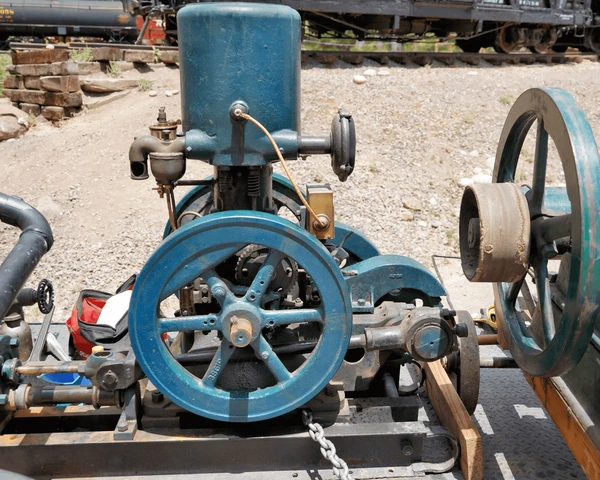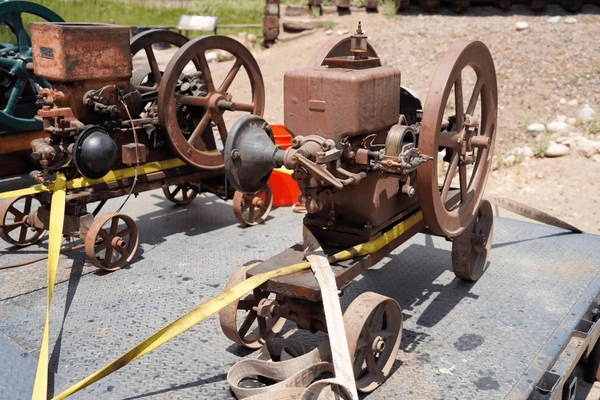
A hit-and-miss engine emerged as an innovative solution for powering small-scale machinery in the late 19th and early 20th centuries. This engine’s unique operation, where it “hits” (fires) only when necessary and “misses” (skips firing) when the engine speed is too high, provided an efficient way to generate power for agricultural machinery, water pumps, and industrial equipment. In this article, we’ll explore the history, mechanics, and ongoing relevance of this engine, offering insights into its design, notable manufacturers, and cultural significance.
What is a Hit-and-Miss Engine?
A hit-and-miss engine is a four-stroke internal combustion engine known for its distinctive operation. During the “hit” phase, the engine ignites the fuel-air mixture, providing power to the piston. However, when the engine speed exceeds the governor’s set limit, the engine “misses” a few cycles, conserving fuel and maintaining a steady speed. This clever mechanism, controlled by a centrifugal governor, made these engines both fuel-efficient and reliable.

Key Features
- Simple Design: It typically features a single cylinder and a flywheel that stores momentum.
- Low RPM: It operates at speeds between 200 and 600 RPM.
- Fuel Efficiency: The engine consumes fuel only during the “hit” phase, reducing waste.
- Distinctive Sound: The rhythmic “pop-pop” sound from its intermittent firing makes it instantly recognizable.
Historical Background of the Hit-and-Miss Engine
Origins
The hit-and-miss engine was developed in the late 1800s to meet the increasing need for reliable power sources in rural areas. Farmers and small industries used it for tasks such as pumping water, grinding grain, and running sawmills. Renowned manufacturers like Fairbanks Morse, Galloway, and Hercules made these engines accessible, transforming rural America.
Golden Era
By the early 20th century, the hit-and-miss engine became indispensable for agricultural and industrial operations. Its reliability and low-maintenance design made it ideal for powering equipment like irrigation pumps, sawmills, and household appliances. For instance, the Maytag 72 Multimotor powered washing machines, demonstrating the technology’s versatility in both domestic and industrial settings.
Decline
As electric motors and modern internal combustion engines gained popularity in the mid-20th century, the hit-and-miss engine slowly fell out of use. However, its historical value remains significant, and many enthusiasts continue to restore and showcase these engines at vintage shows.
Mechanics of a Hit-and-Miss Engine

Operation Principle
The operation of a hit-and-miss engine can be broken into four primary strokes:
- Intake Stroke: The piston moves down to draw in a fuel-air mixture.
- Compression Stroke: The piston moves up, compressing the mixture.
- Power Stroke: The mixture ignites if the engine speed is below the preset limit, driving the piston down.
- Exhaust Stroke: The piston moves up to expel exhaust gases.
The engine “misses” ignition when the flywheel’s momentum keeps the engine running above the optimal speed. This allows the engine to run efficiently, using less fuel while maintaining its pace.
Governor Mechanism
The governor, a centrifugal device, is central to the engine’s operation. It controls ignition by engaging it during the “hit” phase and disengaging it during the “miss” phase. This mechanism helps balance engine speed and fuel consumption effectively.
Modern-Day Relevance of the Hit-and-Miss Engine
Restoration and Collecting
Today, collectors and hobbyists restore hit-and-miss engines for their historical and mechanical value. Restored engines like the Fairbanks Morse 1.5 HP and Galloway Boss of the Farm are frequently displayed at vintage engine shows. These events offer enthusiasts a chance to appreciate the craftsmanship and ingenuity of early 20th-century technology.
Educational Value
The simple design of the hit-and-miss engine makes it a valuable educational tool. Mechanical engineering programs use these engines to teach the fundamentals of internal combustion technology. By studying the operation of an engine, students can gain hands-on experience and better understand engine mechanics.
Cultural Significance
Beyond their technical function, hit-and-miss engines symbolize the innovation of early 20th-century engineering. Their unique sound and operation have made them iconic in documentaries, museums, and historical exhibits. These engines are celebrated as symbols of American industrial progress.
Real-World Examples of Hit-and-Miss Engines

Fairbanks Morse
Fairbanks Morse is among the most well-known manufacturers of hit-and-miss engines. The Field Force The Leader 4 HP was a widely used model, primarily powering agricultural equipment like pumps and irrigation systems.
Maytag Multimotor
The Maytag 72 Multimotor was used to power household appliances, including washing machines. This application demonstrates the adaptability and versatility of hit-and-miss engine technology beyond agriculture.
Restoration Projects
Enthusiasts often restore historic hit-and-miss engines such as the Empire 2.5 HP or the Jaeger (Hercules) 3 HP models. These restoration projects help preserve the historical value of the engines while showcasing their mechanical ingenuity.
Conclusion: The Enduring Legacy of the Hit-and-Miss Engine
The hit-and-miss engine represents an important chapter in the history of internal combustion engines. Though it is no longer widely used, its legacy continues to inspire engineers, historians, and collectors. From its role in powering early machinery to its place as a cultural icon, it provides a glimpse into the ingenuity of early industrial engineering. Whether you’re a history enthusiast or a mechanical aficionado, these engines offer valuable insights into the evolution of modern power generation.
To get detailed scientific explanations of Hit and Miss Engine, try Patsnap Eureka.

